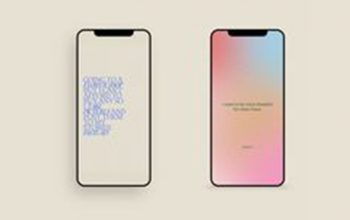It’s been a few 12 months since Apple dropped the bombshell that it will deprecate its Identifier for Advertisers (IDFA), aiming to bolster client privateness. On the identical time, this additionally severely hamstrings how cell app builders monetize by means of promoting. The online results of this has been deep-felt business grief, and we’re nonetheless working by means of the assorted phases.
Table of Contents
First, there was denial. The early chatter was whether or not Apple was actually dedicated to this. When the corporate delayed the rollout of their new coverage from late 2020 to Spring of 2021, many hoped Apple would finally reverse route. When Apple stayed the course, the dialog shortly shifted to salvaging as a lot IDFA footprint as doable by maximizing opt-in charges. Some app builders and different firms proceed to quote that early opt-in numbers could point out some glimmer of promise. Sadly our information reveals the alternative, and extra is shared later on this put up.
Many within the business additionally entered the bargaining stage of grief: Perhaps as an alternative of IDFA, we are able to use fingerprinting? Apple has made it more and more clear that this isn’t an choice. Blocking using IP addresses in iOS 14.6 and rejecting some apps that gather IP addresses have began sobering up the ecosystem.
Calling the Time of Dying
Relatively than persevering with to cling tenaciously to a mannequin that relies on individual-level identifiers, it’s time to just accept that is now not doable and transfer ahead. We have to face the truth that the rosiest interpretation of opt-in numbers is each inaccurate and irrelevant. Since Flurry has detected that over 80% of all iOS gadgets at the moment are upgraded to iOS 14.5 or later, the information is in. And with that, I’m calling the IDFA time of demise as August 2021.
Information Reveals the Flatline
For the reason that April launch of iOS 14.5, the cell app business has tried to learn scant tea leaves to foretell what issues will appear like as soon as all Apple customers are uncovered to App Monitoring Transparency (ATT). Some within the business reported pockets of opt-in numbers as excessive as 40%.1 Nonetheless, Flurry’s broad information set doesn’t help that proportion. Primarily based on aggregated insights from 2 billion cell gadgets, Flurry is measuring a worldwide opt-in price of 25% and a U.S. price of 17% amongst solely these customers who’ve been uncovered to the ATT opt-in immediate.2
After we broaden past simply these gadgets that acquired a immediate — trying on the total gadget base — solely 13% are opted in. Right here’s the way it breaks down:3
- 3% can’t be requested to be tracked (“restricted” standing)4
- 48% haven’t but been prompted by apps, placing them right into a default not-tracked status5
- 40% have denied monitoring through the immediate or the iOS privateness settings6
Even when the remaining 48% of customers, who haven’t but been prompted, are requested to just accept monitoring, it will deliver the 9% of all iOS 14+ customers who could be tracked as much as simply 21%.7 That closing tally would nonetheless be too small to help strong user-level focusing on and attribution.
With iOS model 14.5+ uptake now at 81% globally, the long-term image is far clearer.8 Take a look at the chart under which reveals iOS SDK adoption throughout the device-base.
Counting drops of water within the desert
Arguing over the small variations in how we measure ATT opt-in charges is like counting drops of water in a rising desert. Past the conclusive information already out there, one other important challenge is that 29% of customers have turned off setting on their gadgets to “Enable Apps to Request to Monitor.”10 Which means that many gadgets won’t ever get a immediate asking for permission inside these apps. We estimated this determine by trying on the proportion of customers who “denied” monitoring throughout apps when no immediate was really delivered. Round 3% of iOS 14+ customers worldwide have opt-in prompts turned off by default—corresponding to within the case of gadgets owned by minors.11
And past the opt-in development, we have to acknowledge Apple’s stalwart intentions to comply with by means of on all of this. If Apple doesn’t get privateness managed the way in which it envisions by means of its present efforts, we consider it should hold iterating till it’s happy. Make no mistake, Apple is dedicated. All it’s a must to do is have a look at its latest slick prime-time advert which reveals how they arrive to the rescue in a dystopian world the place third-party suppliers shamelessly siphon any and all information from their iPhone customers. Apple has made privateness a core model worth proposition.
Accepting a post-IDFA panorama
It’s time to take a chilly, exhausting have a look at the IDFA writing on the wall. As an business, we have to speed up previous the melancholy and anger phases of IDFA grief. We should acknowledge that issues are going to be completely different now and transfer to acceptance in order that we are able to work out methods to thrive in a post-IDFA panorama.
There are promising methods to assist rebuild viewers focusing on and addressability now that the information burden has shifted from the demand aspect to the provision aspect. In brief, app builders want a scalable technique to phase and supply entry to their customers on the cohort degree quite than the person gadget degree. Significant monetization is feasible for these who can begin adjusting now. We now have been investing closely on this space since final 12 months, and are prepared to assist publishers. We look ahead to sharing extra information quickly. Hold checking again or simply ask us how.




